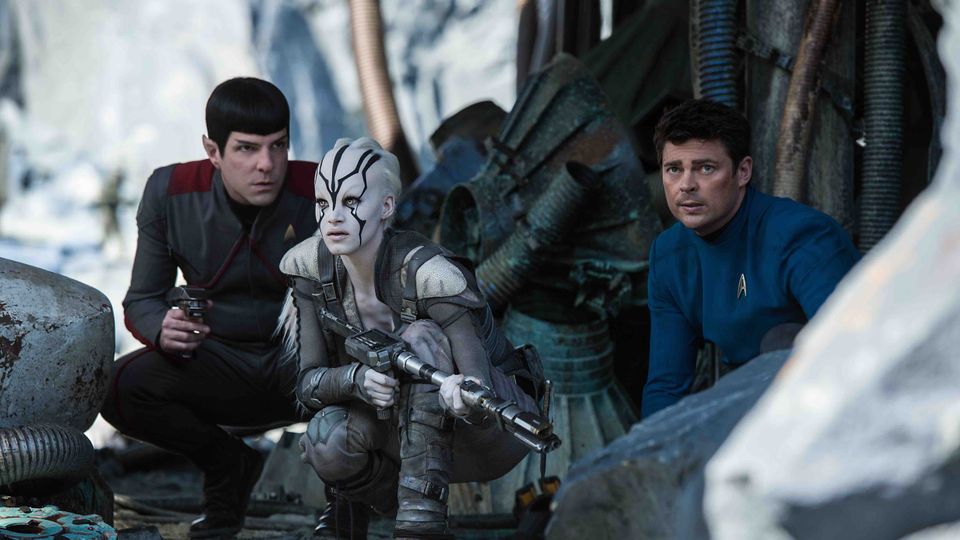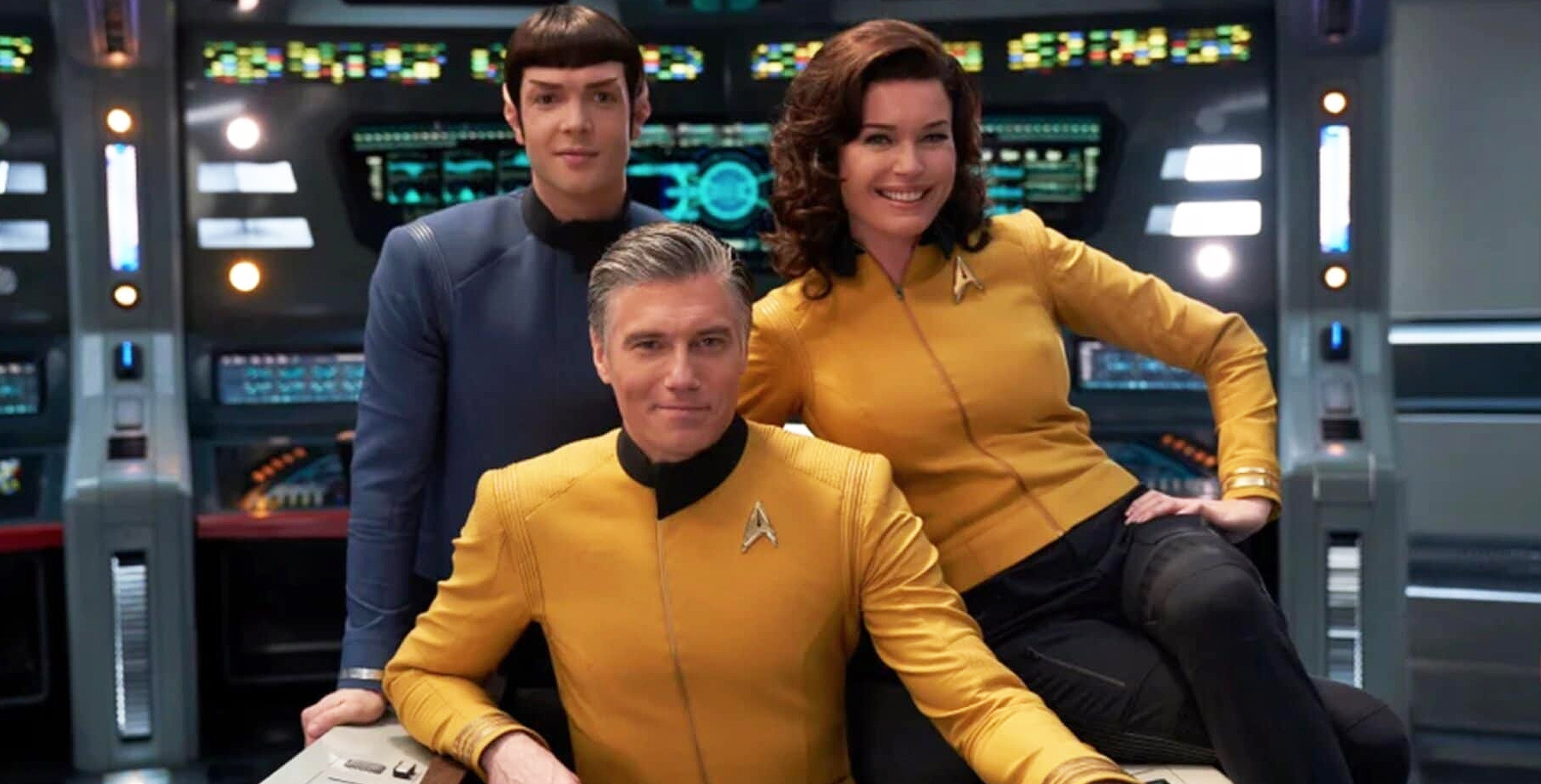Those well-versed in Star Trek lore throw around various jargonistic terms like “phaser,” “dilithium,” and “Prime Directive.” And that’s without even mentioning all the acronyms!
One such term you might’ve heard is the Kelvin timeline. That immediately sounds intimidating and confusing. But it’s actually really simple and ties into a concept that audiences are increasingly familiar with: the multiverse…

What is Star Trek‘s Kelvin timeline?
Modern viewers are probably as familiar with the Kelvin timeline as they are the timeline with William Shatner as Captain Kirk, Leonard Nimoy as Spock, Nichelle Nichols as Uhura, and so on. And those viewers probably don’t realise they’ve watched the Kelvin timeline – just another timeline.
The Kelvin timeline harks from the 2009 Star Trek film, directed by J.J. Abrams. It’s simply a parallel universe, where Kirk is played by Chris Pine, Spock by Zachary Quinto (well, mostly, but that’s a story for another day), Uhura by Zoe Saldana, etc.
Think of these timelines like wooden rulers lined up in parallel to one another. They both track forwards in time. Instead of measurements in centimetres and inches, they have events and characters. Some of these are similar, but played out in a different fashion. Some are completely different. And sometimes, a splinter comes off one ruler and lands on the other.
We’ve seen the latter happen a few times, notably with the Mirror Universe, which has featured in The Original Series, Deep Space Nine, Enterprise, and Discovery.
It can be a strange concept – not least because parallel universes might actually exist, but we’ve got no proof and everything around multiversal theory is just that: a theory.
Nonetheless, audiences are becoming very aware of the notion that various iterations of the same characters and events can co-exist. So much so that Doctor Who fans, for instance, have posited that the Thirteenth Doctor (Jodie Whittaker) era occurs largely in a different universe to the one we’re familiar with. (The idea is highlighted by the Timeless Child arc, which alludes to the Doctor, before she was the Doctor, coming from a parallel dimension.) We’ve seen a few different timelines in Doctor Who otherwise, including “Pete’s World” in Series 2 and Series 4, and in the beautifully apocalyptic ‘Inferno’ (1970.)
Where else have I seen the multiverse?
Comic books have really led the charge when it comes to the multiverse, so too the cinematic universes that many have come to associate the characters with.
There are numerous versions of the Flash, for instance. And Superman and Batman get recast so frequently, it’s become something of an in-joke.
But then there’s Marvel, which has taken this confusing notion and properly explored its implications. In fact, the sequel to Doctor Strange (2016) is Doctor Strange in the Multiverse of Madness (2022), and it’s no secret that the recent movie, Spider-Man: No Way Home (2021), delves into this topic too, as Spidey fights villains from different dimensions, including the Green Goblin, Sandman, and Doctor Octopus, and the Lizard and Electro.
Cinematically, all this began because Marvel filed for bankruptcy in the 1990s. To raise funds, the comics company sold the movie rights for various characters, including the X-Men, Blade, and Daredevil. Then, in 2008, Marvel Studios launched with Iron Man and the Marvel Cinematic Universe (MCU) was born. But how could the MCU account for those other iterations of much-loved heroes? Simple: they happened in different universes, where Spider-Man, for instance, was played by Tobey Maguire and Andrew Garfield, not Tom Holland.
Series like Loki and What If? have further explored and built upon this conceit.
Of course, in the comics themselves, the multiverse has formed a key part of the narratives. They’ve gone as far as numbering each universe, so the MCU is actually Earth-199999, while the core comics universe is Earth-616. Our reality is accounted for too: Earth-1218.
DC, meanwhile, does use number designations, but its main comics universe is Prime Earth. And that brings us back to Star Trek…
Are Star Trek: Discovery and Picard set in the Kelvin timeline?
No. They’re set in the Prime Universe.
This Prime Universe is the same one established in Star Trek: The Original Series.
Sure, fans can argue about inconsistencies, but you can explain some of those away – and the executive producers of both modern shows have been keen to stress that they do occur in the same continuity as TOS, The Next Generation and so on, as opposed to the Kelvin timeline. In fact, Picard takes place 20 years after the events of Star Trek Nemesis (2002), and deals with the after-effects of the film’s events on Jean-Luc Picard and co.
Star Trek Discovery similarly ties into TOS, with one of its lead characters, Michael Burnham, is the adopted sister of Spock – who we saw in Discovery Season 2.
The upcoming show, Strange New Worlds, will continue the adventures of the original USS Enterprise (NCC-1701), albeit before TOS. Anson Mount, Rebecca Romijn and Ethan Peck reprise their respective Discovery roles as Captain Pike, Number One, and Spock.

So the Prime Universe includes: The Original Series and The Next Generation (plus their associated films), Deep Space Nine, Voyager, Enterprise, Discovery, Picard, and Strange New Worlds. And probably The Animated Series. That’s a tricky matter, though, so maybe we’ll save that headache for another time.
The Kelvin timeline includes: Star Trek (2009), Star Trek: Into Darkness (2013), and Star Trek Beyond (2016.)
Have we seen the last of the Kelvin timeline?
We doubt it. In fact, another instalment of the Kelvin timeline films is in the works right now. Star Trek 4, however, has hit a series of delays, and cast and crew have reportedly departed the franchise for unknown reasons. That includes an ever-shifting array of potential directors like Quentin Tarantino (Once Upon a Time… In Hollywood) and S. J. Clarkson (Collateral), and main stars, Chis Pine (Captain Kirk) and Chris Hemsworth, who briefly played Kirk’s father in 2009’s Star Trek.
So while it was due to come out this year, it’s instead been pencilled in for December 2023. Let’s hope the movie still manages to hit that release date.
We’ll see you in the Kelvin timeline!

Live long and prosper scarf – order now from the Lovarzi shop!








Leave a Reply